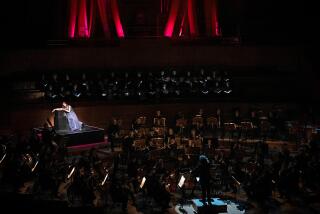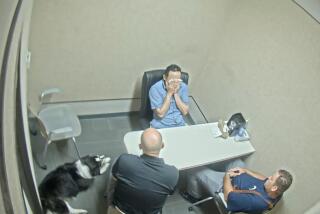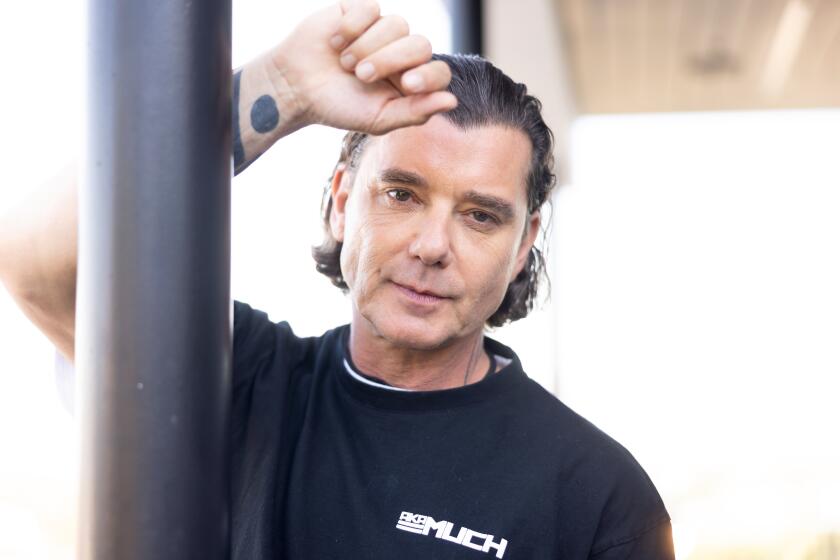Perez is still a force of nature
- Share via
Two months shy of his 75th birthday, postmodern icon Rudy Perez may be losing his eyesight but not his vision. In a program commemorating Sept. 11 on Saturday at Pasadena’s Armory Center for the Arts, Perez again proved that his is a choreographic voice that continues to resonate. Nowhere was this more evident than in his 1982 work, “It Should Go Unsaid,” set to Gavin Bryars’ score, “Jesus’ Blood Never Found Me.”
Revisiting the solo, Perez, clad in a sleeveless, short black unitard (revealing his vulnerability), knee pads and red bandana, did not perform around an altar as he did originally but keenly made use of two white pedestals -- twin towers -- to create a searing piece of movement theater. A master of economy, Perez, his face a map of sorrows, stood between the pedestals looking up, before bending down on one knee, a supplication.
Each gambit was slow, decisive, unspeakably painful: One tower goes down as he leans on the other, before it too becomes a pyre. Eventually falling to the floor, Perez, with body convulsing and legs splayed, is a cipher of grief.
“Take Your Alligator With You,” the choreographer’s whimsical a cappella work that premiered at New York’s Judson Church in 1963, featured Anne and Jeff Grimaldo striking an array of playful poses: Anne brandished a cigarette; Jeff shadow boxed; together they faux fox-trotted, beaming, their shoes providing a soundscape of swooshes across the floor, before Jeff lifted Ann into his arms.
An intense Stefan Fabry performed “Equinox-Run,” Perez’ 1977 solo set to Steve Drews’ synthesized score of engine-like sounds. In aviator goggles and a flight suit with a rope tied to his waist, Fabry executed sharply etched moves. From crouching and balancing on one leg to reaching skyward on his toes, an unseen force at the other end of the rope ultimately prohibited Fabry from breaking out in this study of isolation.
Also on the program: an insightful narration by longtime colleague Jacki Apple; and archival video clips and still images of Perez with his earlier dance companies, assembled by Severo Perez, whose documentary “Countdown: Reflections on a Life in Dance” will premiere in November at MOCA. A discussion and preview of Perez’s latest work, “Double Play,” which debuts next month, completed the bill, the new piece affirming that Perez, a 20th century pioneer, remains a choreographic powerhouse in this millennium as well.
More to Read
The biggest entertainment stories
Get our big stories about Hollywood, film, television, music, arts, culture and more right in your inbox as soon as they publish.
You may occasionally receive promotional content from the Los Angeles Times.









